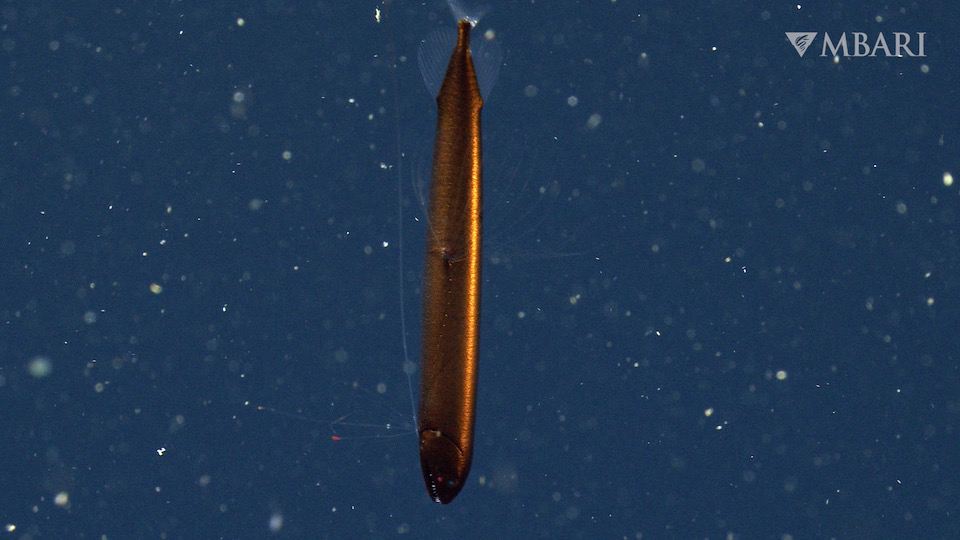Elusive bronze-scaled ‘dragon’ of the deep caught on video off California coast
The highfin dragonfish is the rarest species in this deep-sea group.

Marine biologists aboard an expedition in Monterey Bay in California recently spotted a brilliant and rare deep sea fish named for a mythical creature: the highfin dragonfish (Bathophilus flemingi). This species is the rarest of all dragonfish, and scientists have previously spotted living individuals only a handful of times.
For three decades, researchers with the Monterey Bay Aquarium Research Institute (MBARI) have scoured the bay's depths with remotely operated vehicles (ROVs), finding many wondrous beasties, including several species of dragonfish. However, the highfin dragonfish has proven to be the most elusive. This particular fish was found at a depth of 980 feet (300 meters).
"They are just amazing animals, and part of what is appealing is that color pattern," said Bruce Robison, a senior scientist with MBARI and research lead for the team that made the discovery. The dragonfish's scales shimmer with a metallic bronze hue that is unlike that of any other fish living in the deep sea, Robison told Live Science. The pigments that lend color to the fish’s brassy, bronze skin might actually be a form of camouflage, as these shades absorb the remnants of blue light that make it down to the depths, rendering the fish nearly invisible in its environment. "But when we shine our white lights on it, it’s just gorgeous," Robison said.
Related: 11 strange things that washed ashore in 2021
This type of camouflage suits the fish, which hunts as an ambush predator. floating in the dark and waiting for small fish and crustaceans to swim by. These meals don’t approach randomly, though. Rather, they are lured closer by the dragonfish, which has a bioluminescent filament that extends from its chin. "It uses that lure to attract prey that see the spot of glowing light and are drawn to it because they think it's something small enough that they can eat," Robison said. When prey approaches closely enough, the dragonfish's wide, toothy jaws chomp down.
Dragonfish use bioluminescence not only to catch their mealst but also to avoid being eaten. "Many predators hunt by looking upwards trying to spot the silhouette or the shadows of their prey against the light of waters above,” Robison said. To blend in against a bright background, the dragonfish has a series of light organs lining both of its flanks. These light organs match the color and intensity of the light above, erasing the fish’s silhouette.
When Robison and a team of researchers discovered this fish, they were aboard a week-long expedition on the research vehicle (RV) Western Flyer, conducting numerous experiments and observations during a relatively short time at sea. Despite having a packed schedule, research teams aboard these vessels have to be observant, opportunistic and ready to respond to the unexpected — as they never know what they might spot.
Get the world’s most fascinating discoveries delivered straight to your inbox.
"We’re explorers," Robison said. If you want to see something cool, you often have to divert to take a look at it," and the discovery of this highfin dragonfish is just one of many examples of Robison’s oceanic curiosity paying off. "Often the real joy of those trips comes from the stuff you don’t anticipate.".
Originally published on Live Science.

Cameron Duke is a contributing writer for Live Science who mainly covers life sciences. He also writes for New Scientist as well as MinuteEarth and Discovery's Curiosity Daily Podcast. He holds a master's degree in animal behavior from Western Carolina University and is an adjunct instructor at the University of Northern Colorado, teaching biology.



